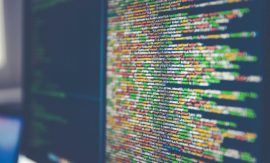Intended learning outcomes: Produce an overview on the representation of the objects and their interrelationships of CRM software.
Customer relationship management (CRM) is the collection and analysis of information designed for marketing, sales, and service decision support (as contrasted to ERP information) to understand and support existing and potential customer needs (cf. [ASCM22]).
CRM software is software that supports CRM.
CRM software development began in the 1980s, when companies first used computer-aided selling (CAS) software for rationalization of their distribution. The shift from this focus on rationalization to an emphasis on quality improvement of customer relationships required an extension to include marketing and services and led to today’s generation of software (e.g., Siebel from Oracle).
CRM software provides functionality in two areas:
- The functions of operational CRM facilitate the business processes behind interactions with customers at the point of contact (“front office”). Tasks arising from the interaction processes and the required information are delivered to appropriate employees (“back office”) for processing, interfaces are provided for further applications (word processing, e-mail client), and customer contacts are documented.
- Analytical CRM solutions, on the other hand, analyze the data created on the operational side of CRM, particularly for purposes of customer analysis and segmentation of the customer base (for instance, identifying potential failures of customer retention) or to exploit cross- and up-selling potentials.
CRM software supports all staff interactions with the customer in a number of ways (see Figure 9.2.5.1):
- CRM software provides a representation of all interactions between staff and customer. Staff members are always informed about who is responsible for supporting a customer and whom they should inform about contacts with the customer.
- CRM software supports staff in organizing, executing, and documenting customer contacts. These may be contacts with an individual customer (in person or by telephone, e-mail, or fax/letter),
the sending of marketing content addressed to several customers, or a sales promotion event to which many customers are invited. - CRM also provides functions for product-related interactions, such as customer service inquiries or sales opportunities. The system captures the sales opportunities and the corresponding order success probability, allowing the company to forecast expected sales.
Fig. 9.2.5.1 CRM software representation of the objects and their interrelationships.
The data required by CRM software for the most part already exist in the company, but they are located within various applications:
- Product-related data (such as customer orders) in ERP software or legacy systems
- Customer addresses in personal information management (PIM) software — sometimes at decentralized workplaces; the PIM file may also document some of the interactions (appointments, e-mail)
- Customer-related documents (such as bids, invoices, invitations) produced by word processing and sometimes administered by document management systems
When implementing CRM software, the challenge is to integrate all of the data and the available interfaces. It is important to evaluate whether the systems work together in a coherent and consistent way. Today, many of the complete CRM software systems are being replaced by applications that make use of a company’s existing PIM applications as the basis or by applications that are components of enterprise software packages. Portals, that is multiservice Web sites, can be used for this task.
Course section 9.1: Subsections and their intended learning outcomes

9.2 Contents of ERP Software and SCM Software
Intended learning outcomes: Describe classical MRP II / ERP software. Present software for customer order production, for the process industry, for transcorporate planning & control in a supply chain, and for Customer Relationship Management (CRM). Differentiate between standard and company-specific software.

9.2.1 Classical MRP II Software / ERP Software
Intended learning outcomes: Present SAP R/3 as a typical example of a classical, generally applicable ERP software package.

9.2.2 Software for Customer Order Production or the Variant-Oriented Concept
Intended learning outcomes: Describe typical software modules for customer order or variant-specific production. Identify specific software packages.

9.2.3 Software for the Process Industry or the Processor-Oriented Concept
Intended learning outcomes: Describe some typical modules of software for the process industry. Identify specific software packages.

9.2.4 SCM Software or APS Software — Software for Transcorporate Planning & Control in a Supply Chain
Intended learning outcomes: Describe the concept and some of the tasks performed by SCM software. Identify specific software packages.

9.2.5 CRM Software — Software for Customer Relationship Management
Intended learning outcomes: Produce an overview on the representation of the objects and their interrelationships of CRM software.

9.2.6 Standard Software or Company-Specific Software?
Intended learning outcomes: Explain various reasons why some companies still need company-specific software. Disclose aspects that should be taken into account when choosing between standard and company-specific software.
